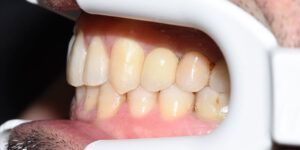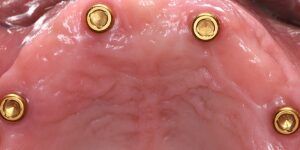We present the case of a 27-year-old female patient who came to the clinic for a root fracture of a tooth in position 1.1.
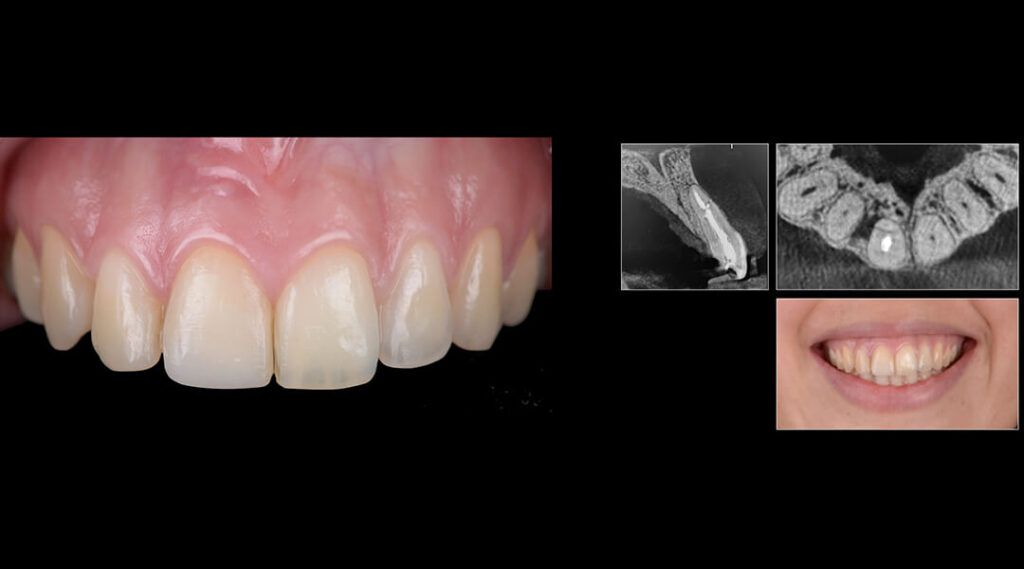
Treatment plan
After noting the poor prognosis of an endo-restorative retreatment, an immediate post-extraction implant procedure with immediate esthetic loading was digitally planned using static guided surgery.
After superimposing the digital files corresponding to the CBCT (.dcm) and the intraoral scan (.stl), a surgical template was printed with complete drilling and fully guided implant placement, in order to control the 3D position of the implant and thus have predictability in the result.
After atraumatic extraction of the fractured tooth, the integrity of the vestibular table and a gingival margin in an optimal position, corresponding to an Elian type I alveolus, were clinically verified.
After a fully guided drilling sequence, an Avinent Biomimetic Ocean CC implant 4mm in diameter and 13mm in length with an insertion torque of 35N was also placed in a guided fashion.
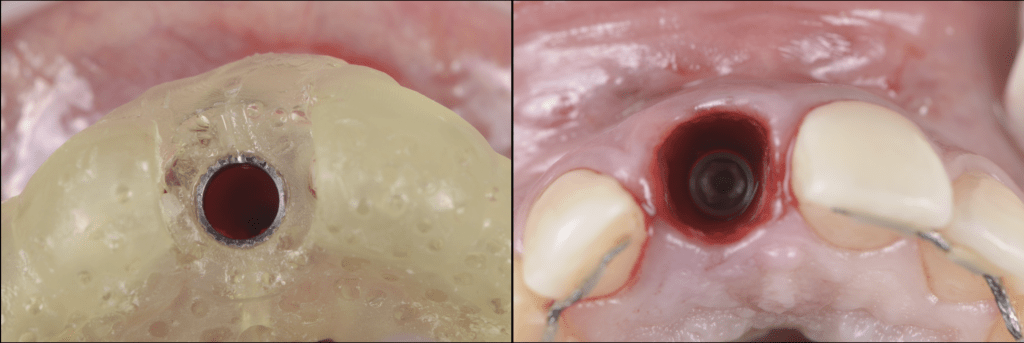
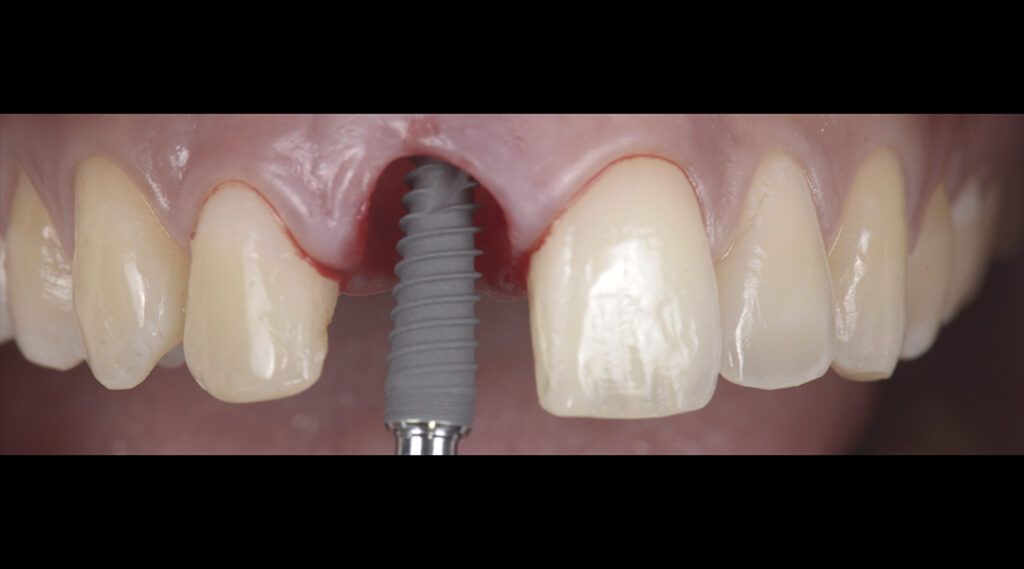
In order to compensate for the physiological changes of the alveolus post-extraction, the gap between the vestibular bone table and the implant was filled with Geistlich Bio-Oss® particulate xenograft (Geistlich Pharma AG, Switzerland), and a posterior palatal connective tissue graft was fixed by tunneling.
Finally, the socket was sealed with a screw-retained temporary crown overlapping the clinical crown of the natural tooth on a non-rotating Avinent CC titanium temporary abutment.
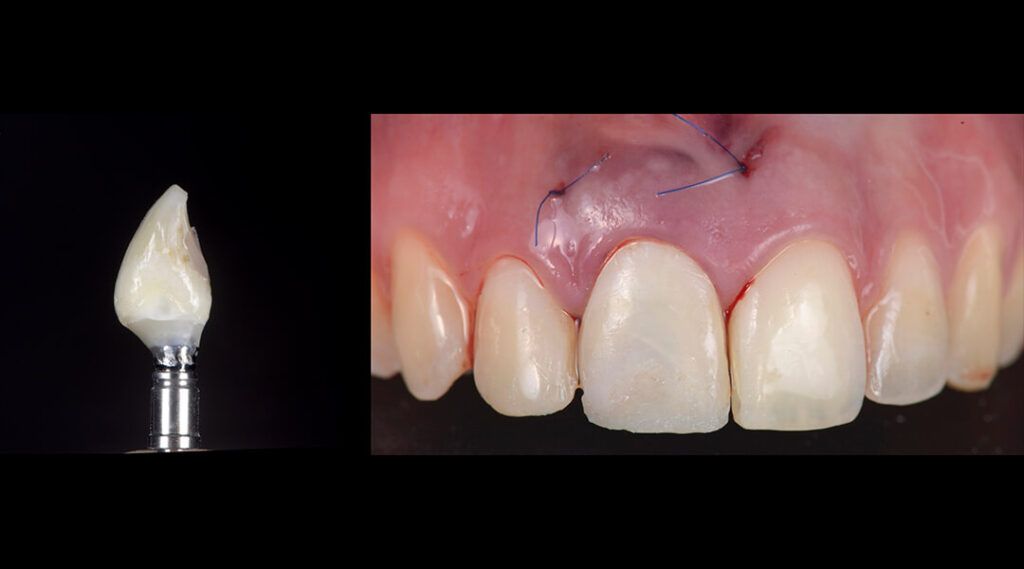
After 4 months of healing, digital records were taken of the case, on the one hand, the emergence profile created with the provisional, and on the other hand, the position of the implant thanks to an Avinent scanning abutment corresponding to the patient’s implant.

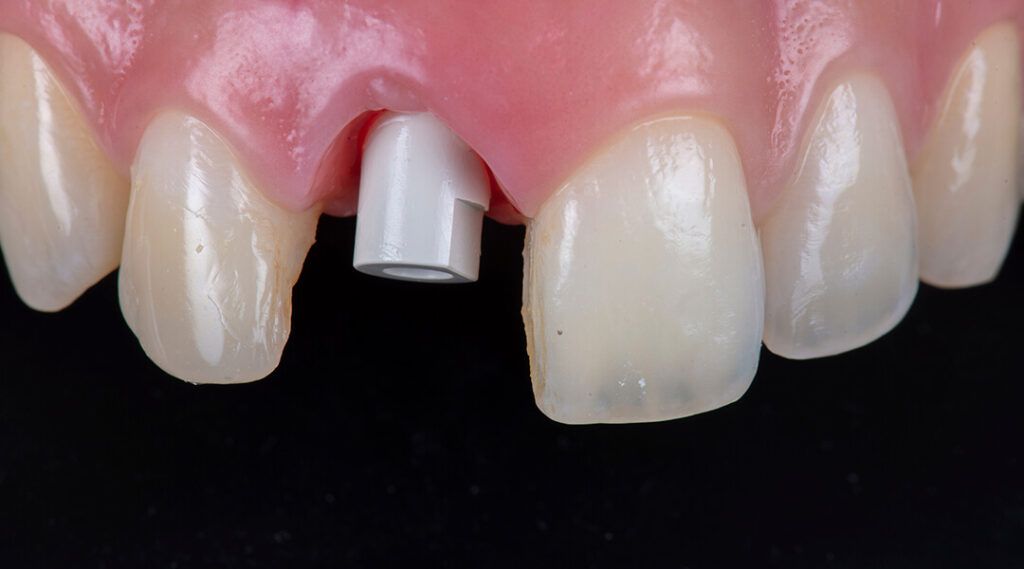
For the definitive restoration, a cement-screw-retained crown with a titanium base or interface and a zirconia crown with a layered ceramic extraorally cemented to this interface were chosen.

Conclusions of the case
The case presented illustrates the potential of digitizing both the surgical and restorative phases of a demanding case of implantology in the esthetic sector.
The protocol presented represents a clinical procedure supported by scientific literature and based on sound biological concepts, thorough planning, and meticulous execution from a periodontal and prosthodontic perspective.
Special thanks to: Manel Cruz for the excellent laboratory work on the case presented.




